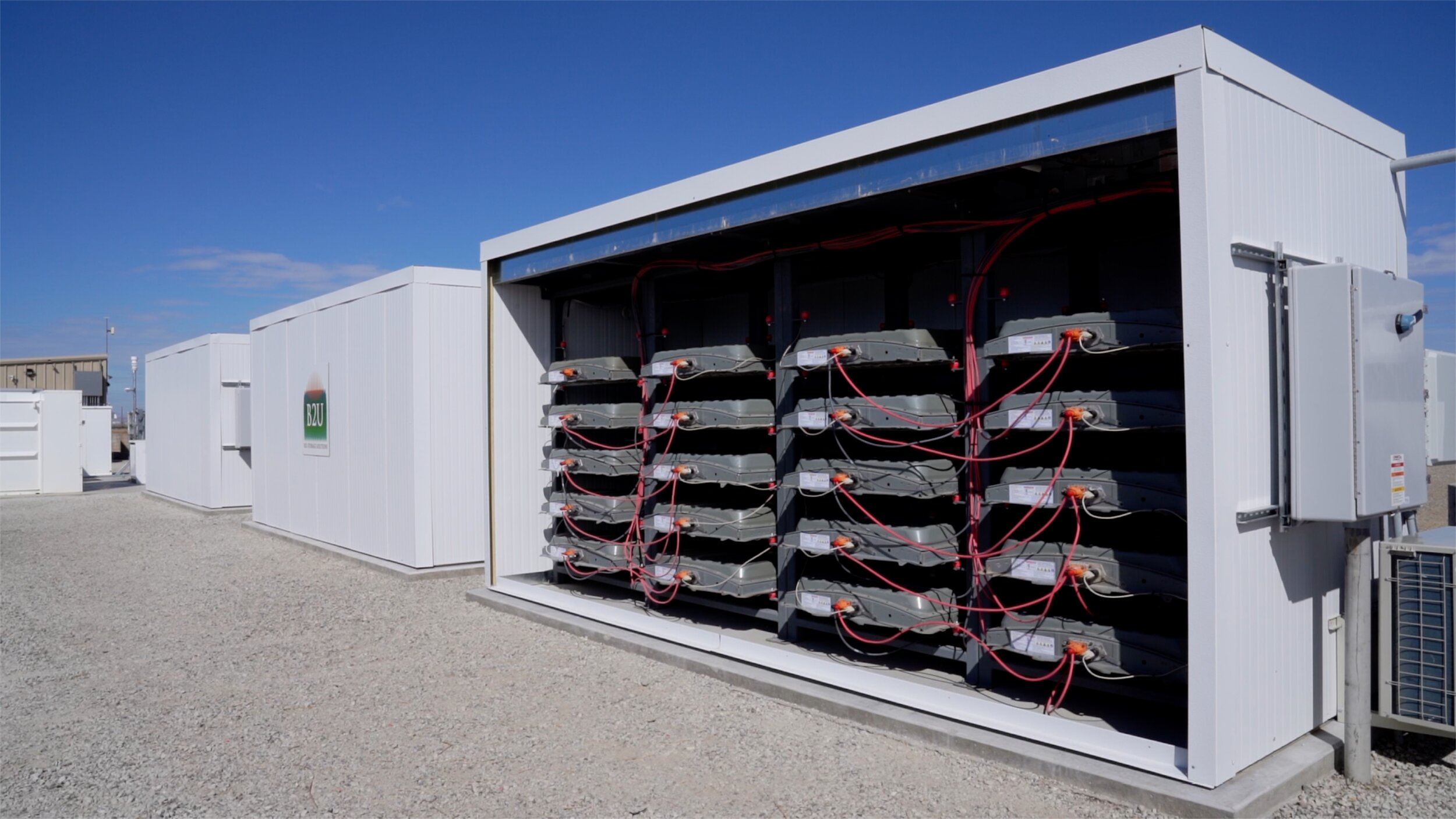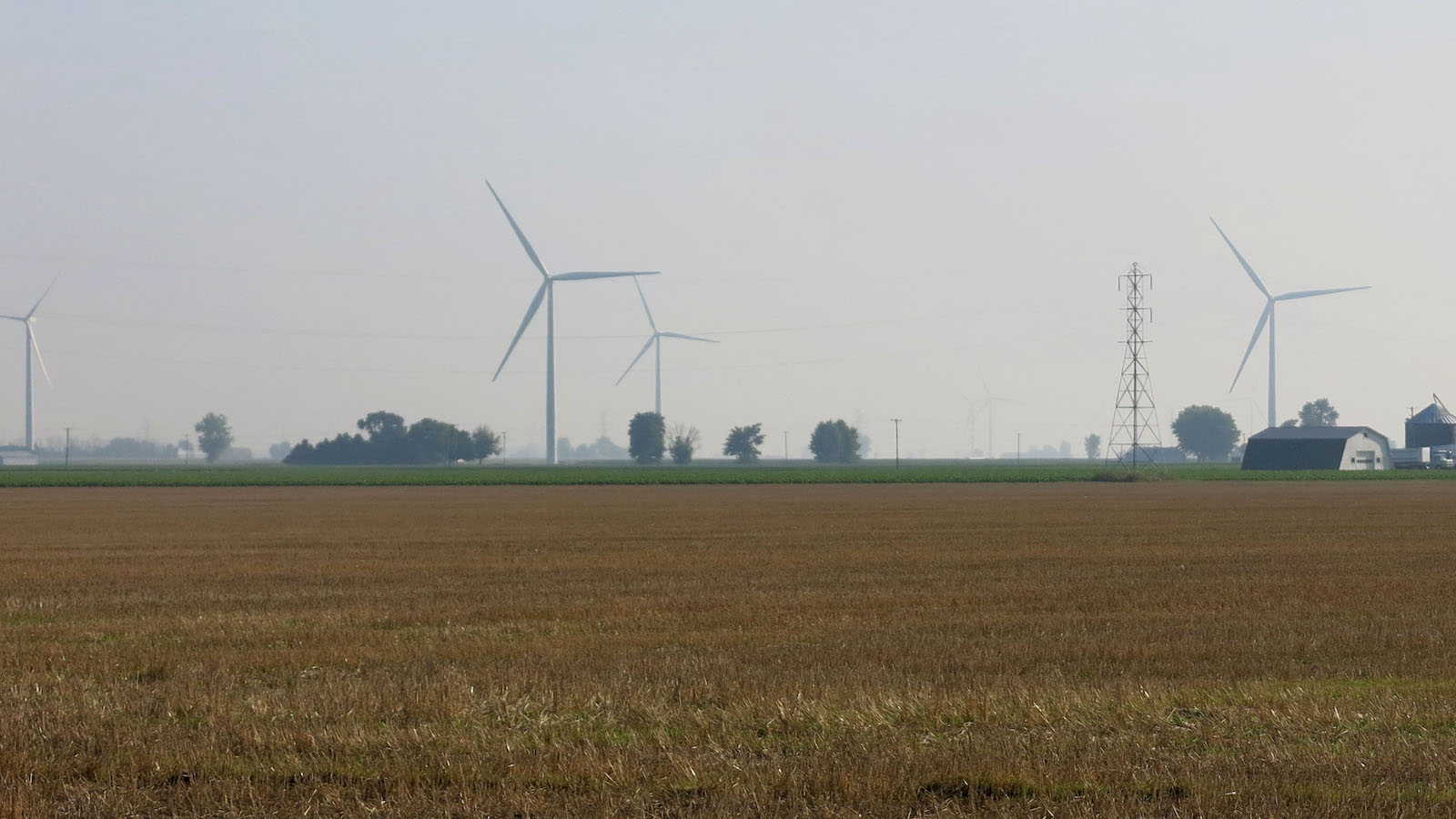This story was originally published by Canary Media.
One recent autumn afternoon, I watched the Atlantic gusts collide with the cliffs that rise above Nazaré, Portugal. Rain pelted down, and the world-renowned swells rose into walls of water that even the most death-defying surfers reach only via Jet Ski. For me, this looked like a rained-out, late-season beach getaway, but for the sliver of Iberia that is Portugal, it looked like a bright future. That weekend, the nation of 10 million ran on nothing but wind, solar and hydropower.
As it turned out, those rainy, blustery days were just a warmup. Portugal produced more than enough renewable power to serve all its customers for six straight days, from October 31 to November 6.
“The gas plants were there, waiting to dispatch energy, should it be needed. It was not, because the wind was blowing; it was raining a lot,” said Hugo Costa, who oversees Portugal for EDP Renewables, the renewables arm of the state utility, which was privatized in 2012. “And we were producing with a positive impact to the consumers because the prices have dropped dramatically, almost to zero.”
To hit Paris Agreement climate goals by 2050, nations need to run their grids without carbon emissions not just for three or six days, but year-round. A handful of countries already do this, thanks to generous endowments of hydropower, largely developed well before the climate crisis drove investment decisions for power plants. Others score highly on carbon-free power thanks to big fleets of nuclear plants.
Portugal falls into a different, more relatable bucket: It started its decarbonization journey with some legacy hydropower, but no nuclear capacity nor plans to build any. That meant it had to figure out how to cut fossil fuel use by maximizing new renewables.
How did Portugal make this happen? It committed to building renewables early and often, pledging a 2050 deadline for net-zero carbon emissions in 2016, several years before the European Union as a whole found the conviction to take that step. Portugal’s last coal plants shut down in 2022, leaving (imported) fossil gas as the backstop for on-demand power.
“The key conclusion, in my opinion, is that it shows that the Portuguese grid is prepared for very high shares of renewable electricity and for its expected variation: We were able to manage both the sharp increase of hydro and wind production, and also the return to a lower share of renewables, when natural-gas power plants were requested again to supply some of the country’s demand,” said Miguel Prado, who covers Portugal’s energy sector for Expresso newspaper.
The task ahead for Portugal’s grid decarbonization is to reduce and ultimately eliminate the number of hours when the country needs to burn gas to keep the lights on. Leaders want gas generation, which made up 21 percent of electricity consumption from January through October, to end completely by 2040.
To reach its climate goals, Portugal has focused on diversification of renewable resources; instead of depending primarily on wind, water, or sun, it blends each into the portfolio and finds ways to make them more complementary. The country’s power companies are now chasing major additional offshore wind opportunities, expanding solar installations and repowering older onshore wind projects to get more out of the best locations.
Anatomy of a six-day clean energy streak
After the overthrow of the authoritarian Estado Novo dictatorship in 1974, the newly formed state utility Energias de Portugal constructed a series of hydroelectric dams on the once-wild rivers that rushed from the eastern mountains to the western coast. The company built its first onshore wind projects in the 1990s, when solar simply couldn’t compete economically, and solar installations have only recently started to catch up.
That’s why the gray skies didn’t hurt overall renewable production during the country’s recent record-setting stretch, as they would have in, say, California or Hawaii. The wind and hydro were cranking, and that’s what mattered.
Any milestone in the rapidly evolving clean energy sector should come with specific parameters. So what exactly did the Portuguese grid accomplish earlier this month?
The six-day record refers to the 149 consecutive hours in which “energy from renewable sources exceeded the industrial and household consumption needs across the country.” The country’s previous record for that metric was 131 hours (a little over five days), achieved in 2019. That doesn’t mean that fossil fuel plants weren’t operating — just that the overall renewable generation more than met customer needs.
But Portugal also just set a national record for meeting the entire electricity system’s needs “without resorting to conventional thermal power generation.” This gas-free stretch started Halloween night and ran for 131 consecutive hours, about 5 days, nearly tripling Portugal’s previous record of 56 hours straight in 2021. And for 95 of those consecutive hours, Portugal exported clean electricity to Spain, because it consistently had more than it needed — again without burning gas.
That trendline is the thing to watch. Renewables-friendly weather will come and go, and shoulder months are ripe for renewables to outpace consumer demand because heating or cooling needs are lower than in the summer and winter. But the last time Portugal had ideal conditions for a renewables record, it only lasted one-third as long without burning gas. As more wind and solar capacity comes online, Portugal expands its arsenal for running entirely on renewables.
This particular week stood out, but it exemplifies a historic shift in energy sources. Natural-gas use for Portugal’s electricity production fell 39 percent year-over-year for the period from January to October, according to REN. That brought overall gas use to its lowest level since 2006.
Portugal has made grid decarbonization perfectly tangible for itself. To reach its climate goals, it needs to take the playbook from this one week in November and run it for longer periods of time, until eventually it doesn’t even need gas on standby. And it has to do so even in the parts of the year when the winds and the rain don’t lash the off-season traveler who’d heard so much about a climate reminiscent of Southern California.
Next steps for grid decarbonization
Portugal’s clean energy accomplishments today build on several decisions made in the past: The country chose to invest in new hydropower capacity, and 18 years ago, it ran a large-scale wind auction, Prado noted.
“It was also important that the country didn’t go to a massive investment in solar capacity when the technology was still expensive,” he explained. “Now Portugal is facing a huge demand of developers to build new PV utility-scale plants, as well as a big demand for decentralized solar projects, taking advantage of a low-cost technology to increase the share of renewable energy in the years to come.”
The country still has a steep task ahead to hit its national target of 85 percent renewables by 2030, Prado added. Major challenges include slow permitting processes and the complexities of balancing ecological impacts with the need for cleaner power.
One way to mitigate delays in permitting new plants is to refurbish old ones.
Portugal has limited landmass to work with, and the best onshore wind sites are already taken, Costa said. But early projects still run 500-kilowatt turbines, while new turbines can produce 6.2 megawatts. Thus, swapping an old turbine for a new one could unlock 12 times the existing capacity. EDP Renewables is doing this strategically to increase production at times when projects aren’t hitting their full export levels; such upgrades produce more clean power throughout the year without necessitating grid investment to handle surges of power.
EDP Renewables is also investigating hybrid power plants, which combine wind and solar at the same location.
“If we combine wind and solar, what we see is that there is a big complementarity,” Costa said. “Typically, when we have wind blowing, we don’t have sun. And when we have sun, typically we don’t have that much wind.”
Grouping developments like that dilutes the fixed costs of construction, making them “more rational, economics-wise,” Costa said. In other words, developers can save money compared to building the same resources in separate locations.
Portugal currently has no large stand-alone battery storage plants, though some batteries sit alongside solar or wind projects. The storage built into the hydropower networks has sufficed until now to balance swings in other forms of generation. But as renewables push ever higher in their share of electricity production, the need to rapidly store and discharge power will call for more batteries, Costa said.
The most ambitious part of Portugal’s clean energy expansion isn’t even happening within Portugal’s terrestrial borders. Having tapped the choicest onshore locations, the power sector will grow wind installations by looking offshore, in waters so deep they demand floating turbines. A few pathbreaking projects globally have proved this is possible, but it remains far less mature than the offshore turbines mounted to shallower sea bottoms.
Back in 2011, EDP Renewables tested a 2-megawatt floating turbine supplied by American company Principle Power, and it valiantly survived pummeling by 17-meter waves off northern Portugal. The company followed up with three 8.4-megawatt floating turbines, and even managed to secure project financing from the European Investment Bank.
“We have a lender who is confident about the cash flows that will be generated by the project and is not relying on any kind of guarantees from the sponsor,” Costa said.
Financiers as a rule fear newer technologies they deem risky; this stamp of approval marks an important step toward normalizing floating wind as a regular part of the clean energy toolkit.
That’s exactly what Portugal aims to do: Its target is to build 10 gigawatts of offshore wind, which will have to be floating. These projects still have a lot of work to do, so Costa said not to expect them until the 2030s. But the government is set to hold an auction for 2 gigawatts of offshore development in December.
That timeline is less certain as a result of this month’s resignation of Prime Minister António Costa due to, of all things, a corruption investigation centered on green hydrogen and lithium interests.
“This government won’t be able to make relevant decisions in the coming months, until the elections in March, which would delay the launch and conclusion of the first offshore wind auction,” Prado said. Other auctions for green hydrogen, renewable fuels and energy storage are likely going to be pushed back, too.
That unexpected interruption doesn’t change a broad political consensus around the need for more clean energy. But for now, it’ll just be the surfers and the fishing boats braving the massive Atlantic waves.
This story was originally published by Grist with the headline Portugal just ran on 100 percent renewables for six days in a row on Nov 26, 2023.
This post was originally published on Grist.

